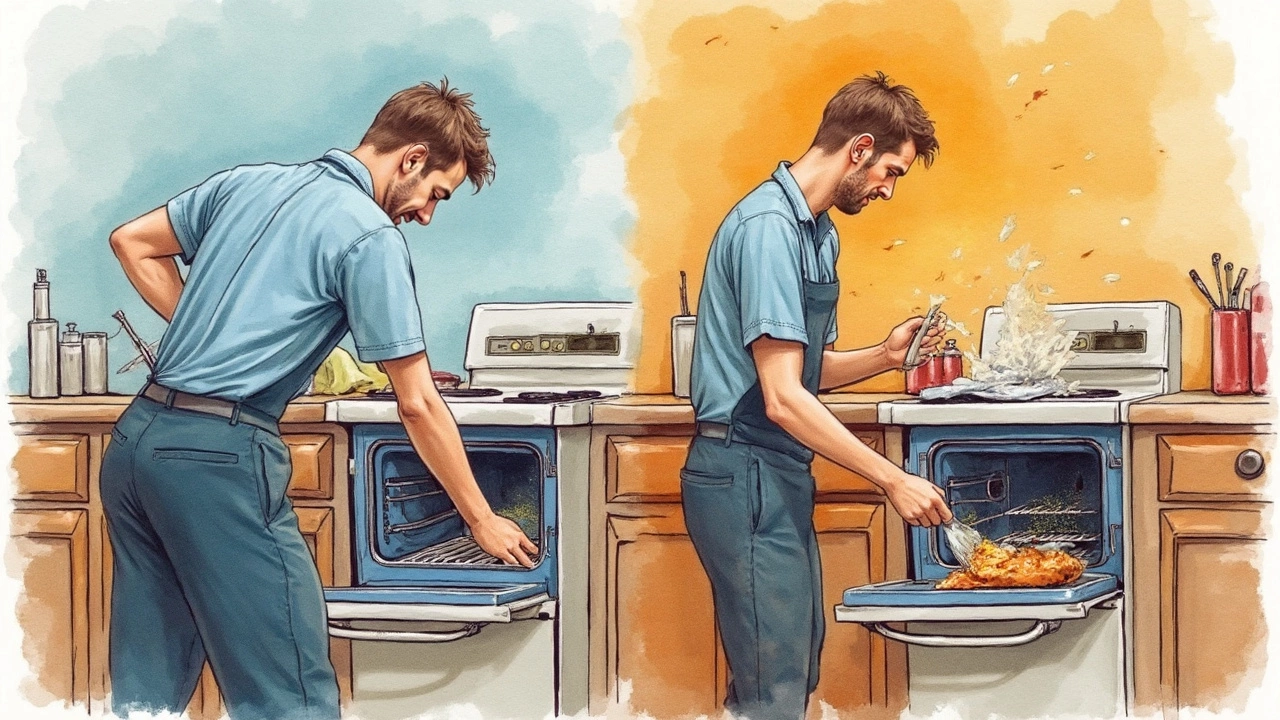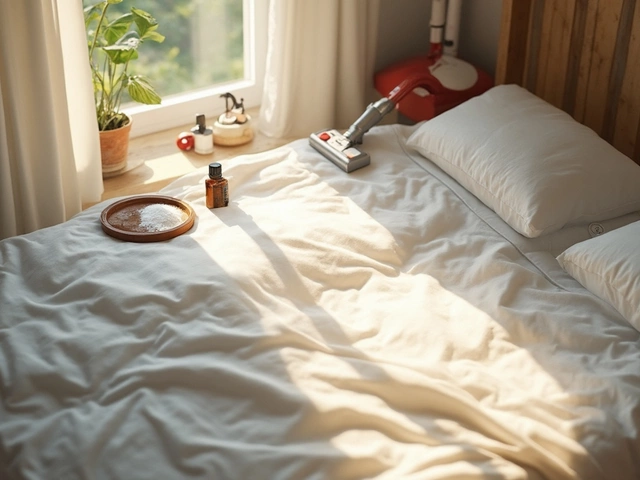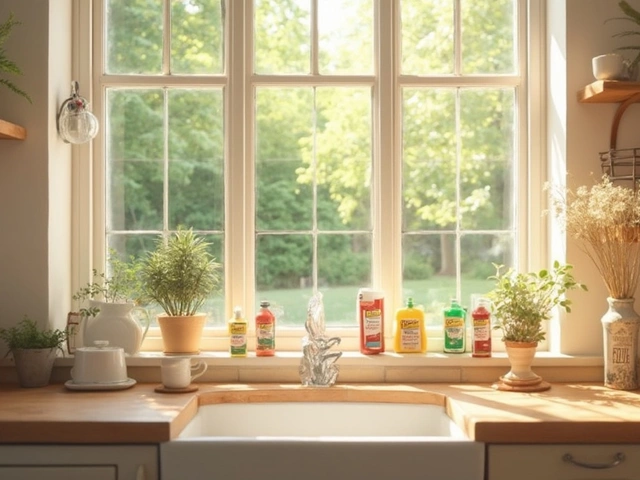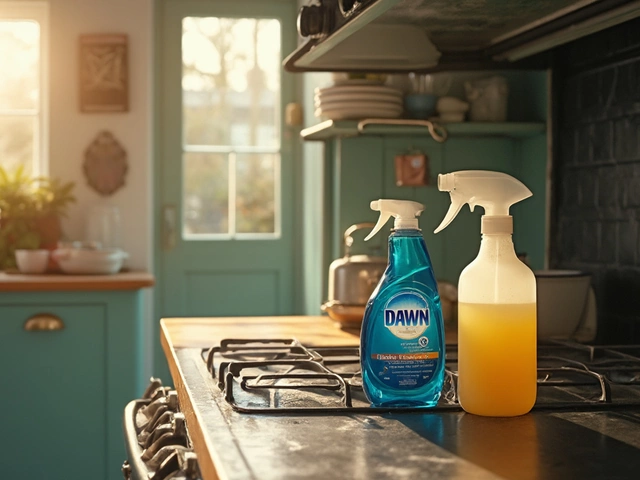Ever wondered if cleaning your oven warm or cold makes a difference? Well, you're not alone! It turns out, the temperature of your oven can seriously impact your cleaning results. Let's break it down.
Now, think about grease. It's pesky and it loves to stick around, especially in a cold oven. When the oven's warm—just turned off warm, not hot—it can make lifting that greasy grime much easier. Heat tends to loosen up that stubborn mess, making it more manageable.
Of course, there's a flip side. A cold oven's a bit safer and less intimidating. Perfect for those of us who want to avoid the risk of burns. Plus, you can use more elbow grease without worrying about the heat. But that means a bit more scrubbing.
So, how do you decide? If safety's a top priority or you've got delicate skin, you might want to wait until it's cool. But if speed and simplicity are what you're after, giving it a clean while it's warm could be the way to go.
- Understanding Oven Temperatures
- Cleaning Techniques for a Cold Oven
- Advantages of a Warm Oven
- Safety Tips and Tricks
Understanding Oven Temperatures
Diving into the world of oven temperatures can feel like cracking a mystery. Why does the temperature matter when you're all set for some good oven cleaning? It's simpler than you think!
Here's the key: When you switch off your oven, the internal temp hangs around at about 100-150°C (that’s roughly 200-300°F) for a while as it gradually cools down. This period is prime time for getting rid of grease and grime – it’s warm enough to loosen things up without burning you. But don’t wait too long or it’ll cool down past being useful.
Warm vs. Cold Cleaning is a big debate. Cleaning warm can mean quicker results. On the other hand, a completely cooled oven, even room temperature, lets you scrub away safely and avoids any heat-related mistakes. It’s personal preference based on your comfort level really.
Why Temperature Matters
So why all this fuss about cleaning your oven when it’s warm? Well, the heat helps break down those fats and baked-on food bits, making them easier to wipe away. It’s all about getting the job done with less effort. Still, there’s a balance to find—warm enough to clean efficiently, not so hot that you might get hurt.
Isn’t it just about finding that sweet spot? Between an oven cleaning nightmare and cooking up a safer and more pleasant experience for yourself.
| Temperature (°C) | Cleaning Recommendation |
|---|---|
| Over 150 | Too hot for safe cleaning |
| 100 - 150 | Ideal for warm cleaning |
| Below 50 | Safe for cold cleaning, requires more effort |
Getting the job done right is all about understanding your oven cleaning preferences and timing. Both methods work, but understanding the dynamics of temperature can make a noticeable difference in your cleaning routine.
Cleaning Techniques for a Cold Oven
Cleaning your oven while it’s cold might seem tougher, but it's definitely doable and safer on your skin and equipment. You just need the right tactics and mindset. We're here to walk you through it!
Gather Your Cleaning Arsenal
To start off, gather the right tools and products. You'll need baking soda, white vinegar, a scrub brush or sponge, and a spray bottle filled with water. Keeping things basic but effective!
Step-by-Step Guide
Here’s a simple but effective method to tackle a cold oven:
- Remove racks: Take out any oven racks and set them aside to clean separately.
- Mix your paste: Create a paste using baking soda and a bit of water. Aim for a spreadable consistency.
- Apply generously: Spread the paste all over the oven's interior, avoiding the heating elements. Let it sit overnight if you can—it gives the mix more time to work its magic on stubborn grime.
- Next day wipe down: Use a damp cloth and wipe the dried paste away. For tough spots, go at them a bit more vigorously.
- Spritz and shine: Spray a bit of vinegar wherever you still see baking soda residue. You’ll notice a little fizzing action, which is perfectly normal and helps lift remaining gunk. Wipe with a clean, damp cloth.
Final Touches
Once your interior's gleaming, give those racks a rinse with some soap and water, scrub away any stubborn spots and pop them back in place. There you have it—less tech and totally effective.
Don't forget: keeping up with regular maintenance makes future oven cleaning a breeze. A quick wipe with water and vinegar after cooking sessions can prevent those dreaded deep cleans.

Advantages of a Warm Oven
Deciding to clean your oven when it's warm can be surprisingly effective. It's not just a random tip from your grandma—there's actual science behind it. Here’s why tackling a warm oven can make a big difference.
Grease and Grime Get Softer
When your oven’s still warm, any leftover grease or grime is softer. It’s like when you soak a dirty pot in hot water to loosen burnt food. A warm oven acts the same way, making it easier for you to wipe away muck without as much effort.
Time Saving
If you're like most people, you're probably not thrilled at the idea of spending ages scrubbing. The warmth helps reduce the time needed for oven cleaning, leaving you free for more exciting things.
Better Use of Cleaning Products
Many cleaning products work better with a bit of heat. Applying them in a warm oven can boost their effectiveness, breaking down tougher stains faster. Make sure to read your cleaner’s instructions to see if a warm application is suggested for an optimal result.
Less Abrasive Methods
Since the grime is softer, you won't need super strong elbow grease or abrasive tools. This means less wear and tear on your oven's surface, keeping it looking newer for longer!
Bringing It All Together
On the whole, cleaning a warm oven isn't just easier—it's smarter. If you use the right timing and methods, you can get a sparkling oven without the back-breaking work. Just keep safety in mind and let the oven cool enough to reach in safely before you start scrubbing away.
Safety Tips and Tricks
When it comes to oven cleaning, keeping safety in mind is super important. Whether you’re opting for a warm cleaning or a cold cleaning, a few tricks can help you keep everything safe.
Protect Yourself from Burns
If you're dealing with a warm oven, be cautious. Wait until the oven cools down a bit—you want it warm, not scalding hot. Wearing heat-resistant gloves can protect your hands from any accidental contact with hot surfaces.
Ventilation is Key
No matter the temperature, make sure the kitchen is well-ventilated. Cleaning products can release fumes that aren't great to breathe in. Open a window or turn on the extractor fan to keep the air fresh.
Choose Your Cleaner Wisely
Some oven cleaners can be quite harsh. Look for products that are suitable for the temperature you're working with. Natural cleaners like vinegar and baking soda work well and are less toxic.
- Warm Oven Cleaner: Opt for cleaners that activate with heat; follow instructions to avoid harsh fumes.
- Cold Oven Cleaner: Choose products labeled for use at room temperature to avoid long activation times.
Watch Out for Slippery Floors
Spilled cleaners and grease can make your kitchen floor a skating rink. Keep some old towels or paper towels nearby to quickly mop up any spills and prevent slips.
Child and Pet Safety
Lastly, always keep kids and pets away from the cleaning area. Curious little hands and paws can get into trouble quickly, and you don’t want distractions while handling cleaners.
With these tricks under your belt, you'll navigate oven cleaning like a pro. Just remember, it's all about balancing effectiveness and safety—no need to rush, take it step by step!




